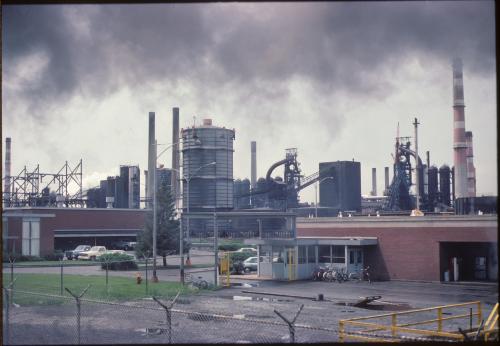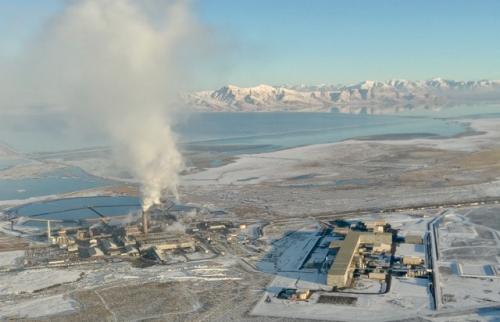1970s-2020s
The year 1970 marked the beginning of a new era in the history of air quality in Utah, and in the United States as a whole. The 1970 amendments to the federal Clean Air Act of 1963 created the Environmental Protection Agency (EPA) and introduced a new, federal regulatory framework for combatting air pollution nationwide. In 1971 the EPA established the first federal air quality standards, designed to reduce air pollution and improve public health. The EPA also launched a study of air pollution and its impacts on public health, and the Salt Lake City metro area was one of six urban zones which the study focused on. Comparison of its results with data collected by the Utah Division of Health helped expose flaws in the EPA study’s methodology. A resulting congressional investigation led to significant improvements in the EPA’s system for measuring pollutants.
While the congressional investigation took place, the Utah Division of Health conducted a study to determine whether Utah was in compliance with the EPA’s national air quality standards. The study concluded that measurements for total suspended particles, sulfur dioxide, carbon monoxide, ozone, and nitrogen oxides exceeded the national standards. However, it was noted that levels of total suspend particles were impacted by dust storms beyond the control of the state, while high levels of carbon monoxide and nitrogen oxides resulted from automobile emissions that were regulated federally. Although pollution in Utah continued to exceed federal standards, those standards were tightened continuously over time as the public health effects of pollution became clearer, and measurements conducted in 1970 reveal significant improvements in air quality since then.
EPA advancements in the measurement of air pollutants and the temporary closure of the Geneva Steel plant in Provo led to an improved scientific understanding of air pollution and its health effects in the last decades of the twentieth century. The EPA’s Inhalable Particulate Network, introduced in 1979, made possible the measurement of fine particulates less than 2.5 micrometers in diameter—the most harmful pollutants for public health. Then, when labor activism forced the Geneva Steel plant to close for thirteen months between 1986 and 1987, scientists were able to compare public health data in the surrounding community from while the plant was closed to data from while it was operating. Studies showed that hospital admissions for children for bronchitis and asthma were about half during the winter of 1986–1987 than before or after. A 1990 report to Governor Bangerter recommending how Utah could address its air quality concerns—which emphasized incentivizing clean vehicles, improving vehicle inspections, and increasing public education—has formed the basis of Utah’s air quality policy ever since. After decades of failure to meet federal air quality standards, Utah’s pollution measurements were just below EPA requirements in 2017–2019. But the EPA is considering lowering the standards even further, and such action would mean that Utah would once again be out of compliance.
In 1998 the EPA designated MagCorp, now U.S. Magnesium, as the Number 1 emitter of toxic chemicals in the nation via its Toxic Release Inventory (TRI) report. Nearly twenty years later the National Oceanic Atmospheric Administration (NOAA) released a study from 2017 that determined U.S. Magnesium was the most significant contributor of particulates that create winter inversions along the Wasatch Front. "Modeling demonstrated that the chlorine and bromine emitted by the refinery were responsible for 10 - 25% of regional PM 2.5 during winter pollution episodes. " (One facility makes a big contribution to Salt Lake's winter brown cloud, NOAA, 2023). These fine particulates can be inhaled and pose a greater health risk to the 2.4 million people living along the Wasatch Front.
A recent improvement to Utah's air quality occurred in 2019 when, by the request of Governor Gary Herbert, major refineries along the Wasatch Front started producing the EPA's Tier 3 low-sulfur fuel. The EPA's Tier 3 Motor Vehicle Emissions and Fuel Standards is a dual approach to lowering vehicle emissions by decreasing sulfur content in fuel and emissions in automobiles. Tier 3 vehicles began in model year 2017 and can reduce emissions by up to 80%. For Tier 3 fuel standards, refineries reduced sulfur content to 10 parts per million (based on an annual average). This reduction in sulfur is to reduce the sulfur build up on a vehicle's catalytic converter, which reduces the emissions from a vehicle's exhaust. While Utah refineries are relatively small volume compared to other locations for major fuel producers, Governor Herbert requested Wasatch Front refineries produce Tier 3 fuels since they have a greater impact on air Utah's quality. To check your vehicle for Tier 3 compliance and learn more about the Tier 3 program, Glade Sowards, Policy Analyst at the Division of Air Quality and Department of Environmental Quality in the DEQ video.


